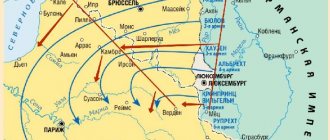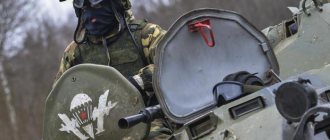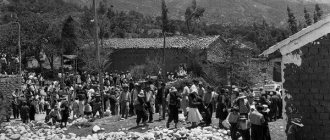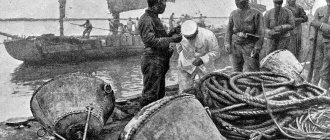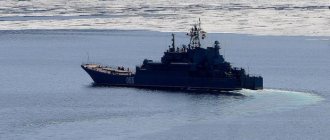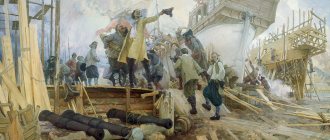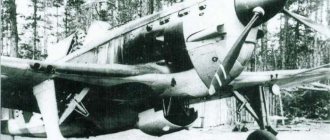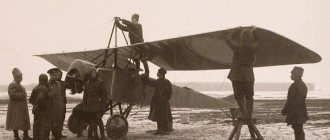Sources and literature
- Marine atlas. Volume III military history. Part one. General Staff of the Navy, 1959
- Marine atlas. Volume III military history. Part one. Descriptions for cards. General Staff of the Navy, 1959
- Battle chronicle of the Russian fleet: Chronicle of the most important events in the military history of the Russian fleet from the 9th century. to 1917 M.: Voenizdat, 1948
- N.V. Skritsky. Corsairs of Russia. M.: Tsentrpoligraf, 2007
- V. Chubinsky. On the participation of sailors in the war with Turkey of 1877–1878. St. Petersburg, 1899
- V. G. Andrienko. Round ships of Admiral Popov. St. Petersburg: Gangut, 1994
- William Allen, Pavel Muratov. Battles for the Caucasus. History of wars on the Turkish-Caucasian front. 1828–1921. M.: Tsentrpoligraf, 2016
- Magazine "Sea Campaign", 2007, No. 1
- Magazine "Sea Campaign", 2007, No. 2
- A. B. Shirokorad. Encyclopedia of domestic artillery. Minsk: Harvest, 2000
- V.V. Yarovoy. Steamship "Grand Duke Konstantin" / Gangut, No. 27 (2001)
- B. Langensiepen, A. Guleryuz, J. Cooper. The Ottoman Steam Navy 1828–1923. Conway Maritime Press, 1995
source: https://warspot.ru/9980-russko-turetskaya-voyna-1877-1878-godov-nachalo-morskoy-shvatki
Plans for two fleets
The main tasks of the Turkish fleet were to prevent the Russian army from crossing the Danube (for this purpose there were 7 more small river battleships), blockade of Russian ports (primarily Odessa and Sevastopol), disruption of Russian communications and protection of their sea communications. Active operations against the coast were planned only in one theater - the Caucasus, where the Ottoman fleet was supposed to facilitate uprisings of the highlanders in the coastal areas, capture Russian coastal ports and provide support for the offensive of the ground army. To do this, in April-May 1877, the bulk of the Ottoman Black Sea Fleet was transferred to Batum, and the commander-in-chief of the entire Ottoman fleet, the energetic and experienced Admiral Musir Bozcaadali Hasan Hysnü Pasha, took over its leadership.
Despite the small size of the Russian fleet, its plans were much more ambitious. Coastal defense was entrusted to "popovki" and coastal batteries, as well as minefields, for the laying and protection of which several private commercial ships were mobilized. In addition, to protect river mouths and passages through minefields, it was planned to build so-called “battery rafts.”
The main offensive means were mine boats and armed “active defense” steamships, which were supposed to act individually on communications off the Turkish coast as auxiliary cruisers. By the end of 1877, there were already eight such ships - including five mobilized from the ROPiT merchant fleet. “Grand Duke Konstantin” was based on Sevastopol, “Vladimir” and “Vesta” were based on Odessa, “Argonaut” and “Eriklik” were based on Ochakov, “Livadia” and “Elborus” were based on Nikolaev, which were joined by “Russia” in the fall.
Armed steamship "Grand Duke Konstantin" Magazine "Sea Campaign", 2007, No. 1
All these ships were armed with 153-mm cannons of the 1867 model with a 24-caliber barrel length, removed from decommissioned corvettes of the Black Sea Fleet, as well as 107-mm and 87-mm guns - naval versions of the land-based 4-pounder and 9-pounder guns on naval installations. In addition, at the suggestion of Lieutenant Commander N.M. Baranov, 152-mm siege mortars with a barrel length of only 9 calibers were installed on ships. Such mortars could fire at an extremely short distance and had little accuracy - but according to Baranov, they could hit Turkish battleships on an unprotected deck with mounted fire.
Looking ahead, we note that one fact of such a defeat actually took place - on April 29 (according to the new style - May 10), 1877, the turret armored corvette "Lutf-yu Jelil" was sunk on the Lower Danube near Brailov by a single 229-mm land shell mortars that fell into the powder magazine. The ship quickly sank, killing 160 people. This case showed the most important weakness of the Turkish battleships - the lack of horizontal armor. However, it was very unreasonable to count on chance - Lieutenant-Commander Baranov himself soon became convinced of this.
Armored turret corvette (sea monitor) "Lutf-yu Jelil" Magazine "Naval Campaign", 2007, No. 2
To war!
Did the priests fight? Yes a little bit. When the Russian-Turkish War began in 1877, Andrei Alekseevich Popov repeatedly petitioned that his ships be allowed to go on a raid and engage in hostilities, proving their functionality in practice. But the high command was completely unimpressed with the results of the tests (along the way, another problem emerged: due to a poorly thought-out ventilation system in the boiler room, workers fainted from the heat and were unable to work for a long time and continuously). The Popovkas were ordered to remain floating coastal fortresses - as originally intended.
Nevertheless, on July 27-28, 1877, the ships made a military raid along the Danube, covering the transport ships of the Lower Danube Flotilla. Subsequently, there were two more test raids, once the Turks even appeared on the horizon... but it didn’t come to a fight, and the slow-moving priests simply could not catch up with the enemy.
The main problem with the popovkas was not even their technical shortcomings. The fact is that Russia, battered by the Crimean War, did not have the proper financial resources for the systematic revival of the fleet. Everything that was in the treasury was essentially thrown away on strange experimental ships, which were expensive and did not bring much benefit. Of course, conventional armored cruisers should have been built, capable of operating both offshore and on the open sea.
But they continued to improve the priests - don’t leave an expensive project unfinished! After another modernization in 1879, the guns on the Vice Admiral Popov were brought back to normal: they fired smoothly, clearly and every seven minutes. The Popovs handled the pitching perfectly, which inspired Popov with new strength - he presented a project for a third, now elliptical, battleship. But the naval leadership has already realized their mistakes. Two priests are good, but a third is not needed, they decided at the top. But this was not the end.
"Kyiv" history
“Kyiv” was less fortunate. In the process of working on the Novgorod, more and more deficiencies were revealed, and they decided to suspend the construction of the second popovka until the Novgorod passed tests.
However, Novgorod managed to develop even its maximum speed of 7.5 knots only once - in the summer of 1874 under the command of Lieutenant Commander Bistrom.
Already on May 24, 1873, the first popovka successfully covered some distance under its own power, “squeezing out” 6 knots (11 km/h), which was extremely slow even for a monitor. At the same time, coal was consumed up to two tons per hour - Novgorod turned out to be an uneconomical ship. The first tests revealed all the shortcomings of the popovka. During waves, water overflowed the low sides and flooded the lower rooms, the rate of fire was extremely low (each gun took ten minutes to load), and the shots caused the ship to spin around its axis. As a result, in the winter the popovka was sent for modification to Sevastopol workshops. There, gun stops were strengthened, deck superstructures were repurposed - in general, modernization was carried out to get rid of “childhood diseases”. Popov personally supervised both testing and modifications. As a result, “Novgorod” began to tolerate pitching well and even made a number of voyages (to the Caucasian coast and to Taganrog), but they could not cope with the extremely low speed. In the oncoming wave, the popovka generally stood still, and its speed record was only 7.5 knots (13.9 km/h).
Nevertheless, on August 27, 1874, work on “Kiev” was officially resumed, renamed “Vice Admiral Popov” due to the designer’s promotion in rank. The second popovka was not very different from the first, but was much larger - its diameter reached 36 m, and the deck was raised higher above the water, which improved the seaworthiness of the vessel. The armament was also increased: two 305 mm guns in the center and four 87 mm guns in the superstructure seemed to be a formidable force. In addition, improvements in the hull configuration made it possible to break the Novgorod speed record the first time and bring it to a maximum of 8 knots.
Only the results of the shooting turned out to be terrible. Even the reinforced machines of the Pestich system did not withstand recoil; when firing from the main caliber, the ship shook, and the deck shook until the structure was damaged. Strengthening led to a heavier butt and, accordingly, to a decrease in speed...
"Grand Duke Constantine" goes to sea
The only response to the activity of the Turkish fleet was the expulsion from Sevastopol to the shores of the Caucasus of the active defense steamship "Grand Duke Konstantin" under the command of Lieutenant S. O. Makarov. This ship, built in France in 1858, had a displacement of 1480 tons and a speed of 12.5 knots. “Konstantin” carried one 152-mm mortar, two 107-mm, 87-mm and 76-mm cannons, but its main weapons were to be four boats armed with pole and towed mines.
Captain 2nd Rank S. O. Makarov History of the Hero City of Sevastopol. 1783–1957. Part one. Kyiv: Publishing House of the Academy of Sciences of the Ukrainian SSR, 1960
Already on the night of April 29 to 30 (from May 11 to 12), “Konstantin” approached Batum, after which the boats “Chesma”, “Sinop”, “Navarin” and “Miner” attacked the Turkish yacht “Sultaniye” standing in the roadstead. (3095 t). The fastest “Chesma” brought a towed mine under the ship, but it did not explode “due to technical imperfections” (as Russian naval works write about it - according to some sources, the electric fuse did not work). Despite the gunfire from the Turkish ships, the boats left the raid without losses: “Navarin” and “Miner” returned to “Konstantin” and were taken on board; “Chesma” and “Sinop” went along the coast to Poti, where “Grand Duke Constantine” also arrived.
Yacht “Sultaniye”, 1903 B. Langensiepen, A. Guleryuz, J. Cooper. The Ottoman Steam Navy 1828–1923
Lieutenant Makarov reported to the commander of the Black Sea Fleet, Vice Admiral N.A. Arkas:
“The sortie that was made convinces me that an attack by boats at night is possible, and now with people under fire, I am more confident than ever in the success of the sorties. I ask Your Excellency to allow me to go now... to carry out a new attack where possible.”
On May 3, “Konstantin” returned to Sevastopol, and on May 6, it again reached the Caucasus coast to attack the Turkish squadron, which had previously bombarded Ochamchira. However, all attempts to attack the enemy with mine boats on May 8 and 9 were unsuccessful due to fog. To divert the attention of the Turks, Makarov sent his ship to Sinop, hoping to burn several merchant ships here, but due to the strong southwest and lack of coal, he was forced to return to Sevastopol. For the near future, the main task of the Konstantin and other Russian cruisers was not the fight against enemy combat ships, but actions against Turkish shipping.
